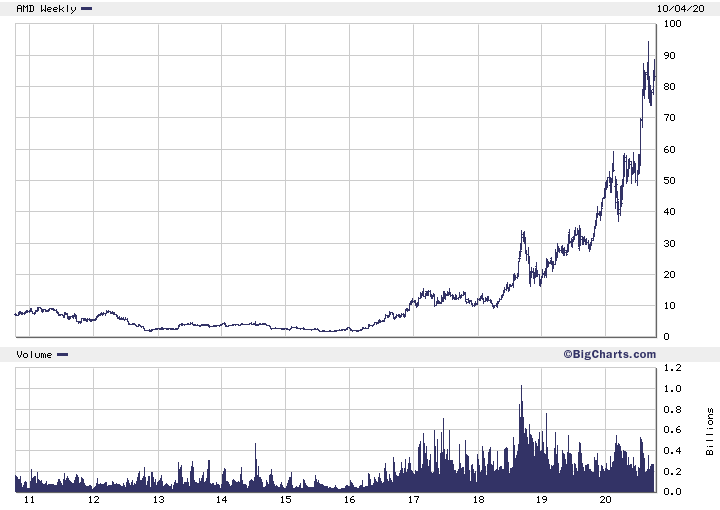
AMD is in talks to acquire Xilinx Inc. in a deal that could be valued at as much as $30 billion. That would be AMD’s largest purchase ever, by a wide margin, and conjures memories of a similarly audacious transaction from 2006 that left the company mired in debt and flirting with bankruptcy.
Wall Street is betting Su can pull off the latest deal. That’s a testament to the confidence investors and customers have in her ability to deliver quality products on time and her success in slashing debt. AMD shares slipped 3.9% on Friday, a relative thumbs-up given the company’s checkered deal history. That leaves the shares up more than 2,000% since Su was appointed CEO in late 2014.
“The deal would make sense, particularly if they were to use stock, which is likely the only way a deal could get done,” said Chris Caso, an analyst at Raymond James & Associates. “We think investors would see this as using their recently valuable stock currency to buy what’s generally considered to be Xilinx’s stable, recurring cash flow.”
AMD has come a long way since 2006, when it bought graphics chipmaker ATI Technologies for more than $5 billion. At the time, AMD was on a roll. It was taking market share from Intel Corp. with products widely regarded as better and cheaper. Its stock was on a tear and revenue was growing rapidly.
But under Su’s predecessor Hector Ruiz, AMD had a factory network that required billions of dollars a year in investment to keep up with Intel. Problems with a chip design delayed new product launches and the company gave back market share. That led to a downward spiral in revenue and profit, making it increasingly difficulty to repay the debt incurred from the ATI deal. When Su took over in 2014, AMD’s stock was trading around $2, and analysts wondered whether AMD could survive.
Now AMD has shed its expensive factories and outsourced the work to Taiwan Semiconductor Manufacturing Co., which is has leapt ahead of Intel in production capabilities.
AMD’s soaring stock price and low interest rates give it new ways to pay for a $30 billion transaction. While Caso and other equity analysts expect the company to use a lot of stock, others are less sure.
According to Fitch Ratings analyst Jason Pompei, the purchase will have to be comprised of mainly cash funded by debt.
Striking the right balance will be crucial. Raising $10 billion in debt is the absolute maximum AMD should consider, with less being the preferred option, according to Bloomberg Intelligence analyst Anand Srinivasan.“The bond market is falling over itself to lend money. This is the time to do it,” he said. But “AMD has made debt reduction a core part of its strategy.”
Xilinx makes chips called field programmable gate arrays that are increasingly used in large cloud data centers. The only other major FPGA player is Intel, which acquired the other provider in this field, Altera Corp., in 2015.
Source: Bloomberg, Yahoo Finance


